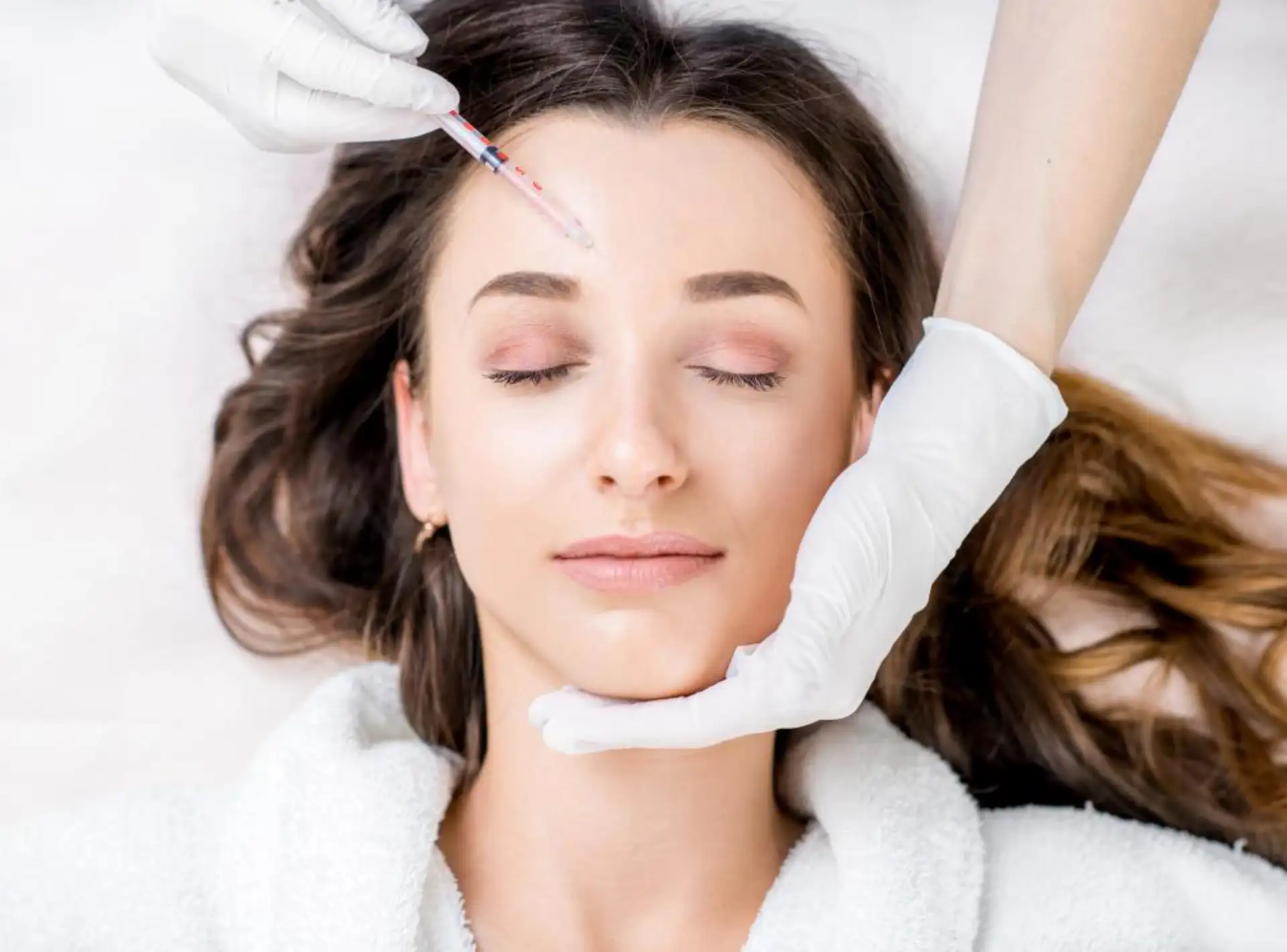Dermal fillers have become an extremely popular choice for people who want to improve their facial features and reduce the signs of aging without undergoing surgery. These injectable treatments add volume and smooth wrinkles, providing a quick and minimally invasive way to restore a youthful appearance. Dermal fillers are typically made of substances such as hyaluronic acid, which the body recognizes as a natural dermal component and behaves accordingly, blending seamlessly to improve facial features. Despite their popularity and efficacy, it is critical to be aware of potential complications following dermal fillers and treatments. Swelling, bruising, and infection are all possible side effects of dermal filler treatments in Dubai, emphasizing the importance of having them performed by experienced professionals. Understanding these risks can help people make more informed decisions and seek appropriate care if complications arise.
Dermal Fillers In Dubai
Dermal Fillers in Dubai are a popular non-surgical procedure that restores volume, smoothes fine lines, and improves facial contours for a more youthful appearance. This procedure uses high-quality injectable fillers to target areas such as the lips, cheeks, under-eyes, and jawline with natural-looking results. The treatment is quick, minimally invasive, and requires little to no downtime, making it ideal for people with busy schedules. Dermal fillers in Dubai use skilled specialists and advanced techniques to provide safe, effective, and long-lasting facial rejuvenation.
BOOK AN APPOINTMENT TODAY
Common Complications After Dermal Fillers
Dermal fillers are commonly used to improve facial features and reduce the signs of aging. However, as with any cosmetic procedure, dermal fillers have potential risks, which include:
- Swelling and bruising: Swelling and bruising are common right after the injection. They typically resolve within a few days, but they can be reduced by adhering to post-treatment care guidelines.
- Infection: Infections at the injection site are uncommon, but possible. They can cause redness, tenderness, and in severe cases, necrosis (tissue death). Vessel blockage is a rare cause of necrosis.
- Bumpiness and lumps: The filler material may occasionally form lumps or bumps beneath the skin. These are usually only temporary, but if they persist, additional treatment may be required.
- Asymmetry: If the filler is not distributed evenly, the results could be uneven. This is usually addressed with the use of additional filler or other forms of treatment, such as dissolving the filler when it is no longer required.
- Vascular complications: If a filler is accidentally injected into a blood vessel, it can result in serious complications such as tissue death, necrosis in the treated area, and blindness (only in the nose). Medical attention must be provided as soon as possible.
Complications Of Hyaluronic Acid Fillers And Their Management
Hyaluronic acid (HA) fillers are popular because they can improve facial features and reduce signs of aging. However, complications may occur, and understanding these issues is critical for safe treatment. Lumps and bumps can occur when HA fillers are unevenly distributed or injected too superficially. These are often treated by massaging the area to smooth out the filler. If the lumps persist, an enzyme known as hyaluronidase can be injected to dissolve the excess filler, effectively removing them.
Asymmetry can occur when the filler is not evenly distributed or when one side of the face reacts differently to the treatment. This problem is typically solved by adding more filler to balance the appearance or, in some cases, dissolving some of the filler with hyaluronidase.
Vascular complications are the most serious potential problems. These occur when filler accidentally enters a blood vessel, causing blockage and reduced blood flow, which can result in tissue death or blindness if the nose is treated. Immediate treatment is required, which includes the use of hyaluronidase to dissolve the filler, warm compresses, antibiotics, aspirin, and possibly other medications to dilate the blood vessels and improve blood flow.
Because of the high vascularity and delicate structure of the lips, those considering lip fillers in Dubai should proceed with caution. Swelling and bruising are common but usually temporary. Cold compresses and over-the-counter pain relievers can help with these minor complications. Severe pain or persistent changes in skin color necessitate immediate medical attention.
MEET THE EXPERT DOCTOR
Treatment For Common Filler Complications
When complications arise from dermal fillers, immediate action is required to reduce side effects and ensure patient safety. Swelling and bruising can be treated with cold compresses and over-the-counter anti-inflammatory medications such as ibuprofen, but these should be avoided if there is a risk of increased bleeding. If lumps and bumps appear, gentle massage can help smooth them out, and hyaluronidase can be used to dissolve any excess filler that remains.
Professional treatment options for persistent or severe complications include hyaluronidase injections to dissolve hyaluronic acid fillers, steroid injections to reduce swelling and inflammation, and antibiotics to treat infections. Laser treatments and light therapy can also be used to reduce bruising and improve skin appearance following a complication. The non-surgical eye lift in Dubai is an alternative treatment for eye-related complications that uses advanced techniques such as laser and radiofrequency to tighten the skin and improve aesthetics without invasive surgery.
Managing Severe Complications
Recognizing severe complications from dermal fillers is critical for timely and effective treatment. Tissue necrosis is distinguished by severe pain, skin discoloration (typically a dusky or bluish tone), and ulceration. It can happen when the filler blocks a blood vessel, cutting off blood flow to the tissue. Severe allergic reactions can cause rapid swelling, redness, itching, difficulty breathing, or anaphylaxis, which is life-threatening.
In cases like this, it is critical to seek medical attention right away. To avoid permanent tissue necrosis, use hyaluronidase to dissolve the filler as soon as possible, as well as warm compresses and blood flow-improving medications. Antihistamines, corticosteroids, and epinephrine can help save a person’s life if they have a severe allergic reaction.
Prevention Of Filler Complications
To reduce the risks associated with dermal fillers, choose an experienced practitioner who understands facial anatomy and injection techniques. An experienced professional can significantly reduce the risk of complications by carefully evaluating each patient’s specific needs and medical history. It is also critical to ensure that the practitioner only uses high-quality, approved fillers.
Following pre- and post-care instructions is critical to avoiding complications. Pre-care may include avoiding blood-thinning medications and supplements, while post-care frequently entails applying cold compresses to reduce swelling and avoiding strenuous activities that can exacerbate bruising. These steps help ensure the best possible outcome while reducing the risk of adverse reactions.
Consultations are essential for preventing complications. They provide an opportunity to establish realistic expectations, discuss potential risks, and ensure that the patient’s goals are in line with what can be safely accomplished. During consultations, the practitioner can also look for any contraindications that may increase the risk of complications, such as pre-existing medical conditions or allergies.
Complications After Dermal Fillers And Their Treatment
To treat and manage dermal filler complications, serious issues such as allergic reactions and tissue necrosis must be identified and treated as soon as possible. The risks can be significantly reduced by choosing an experienced practitioner, following both pre- and post-care instructions, and receiving thorough consultations. It is critical to consult with qualified professionals who can provide individualized guidance while ensuring secure, successful outcomes. If you are considering getting dermal fillers or are currently experiencing complications, you should look for a reputable beauty clinic in Dubai. They have experienced practitioners who can provide you with customized guidance and treatment plans to help you achieve your aesthetic goals safely.
How Long Does It Last?
Dermal fillers last for a different amount of time depending on the type of filler used, the area that was treated, and the patient’s metabolism. Most hyaluronic acid-based fillers last between 7 and 19 months. Fillers in the cheeks or under the eyes tend to last longer, while fillers in areas like the lips tend to fade faster because they move around more. Fillers that are more advanced and have a thicker consistency can even last up to two years. How quickly a person’s body breaks down the filler naturally, their lifestyle, and the quality of their skin all play a part. Many patients choose maintenance sessions when the effects start to wear off to keep the look they want. This ensures long-lasting facial harmony and rejuvenation.
Best Aesthetic Clinic In Dubai For Dermal Fillers
Best Aesthetic Clinic in Dubai for Dermal Fillers is Perfect Doctors Clinic, renowned for delivering exceptional contouring and facial rejuvenation outcomes. The clinic, which employs a group of highly qualified specialists, provides accurate dermal filler procedures that improve facial features, reduce fine lines, and naturally restore volume.
People of all ages use dermal fillers all the time to get the shape of their faces they want without having to go through surgery. Dermal fillers made from natural ingredients make the skin fuller, smooth out wrinkles and fine lines, and give people subtle cosmetic improvements based on their tastes. Even though dermal fillers are most often used on the face, they can also be used to make other parts of the body look and feel younger, like the hands.
















































